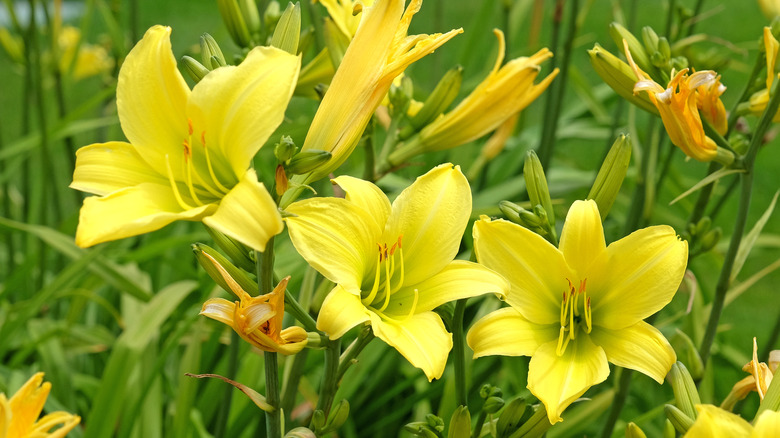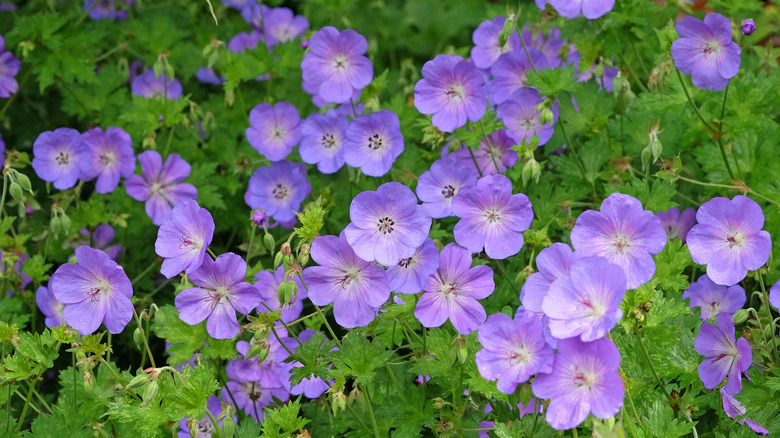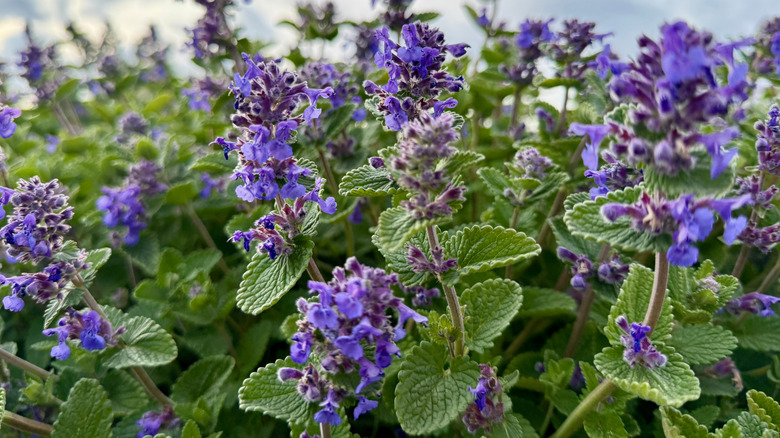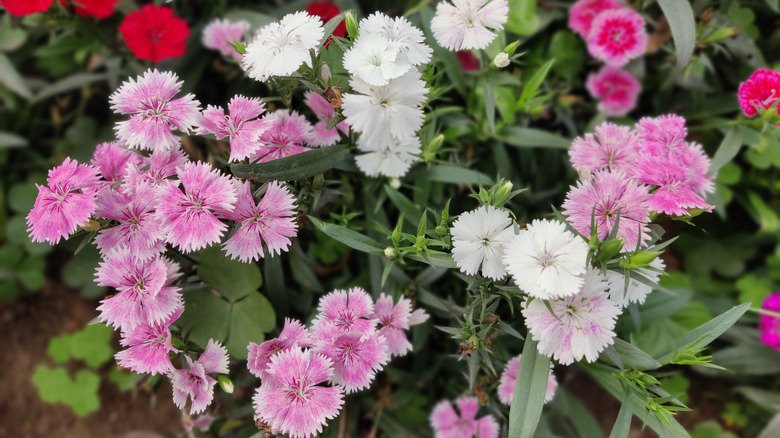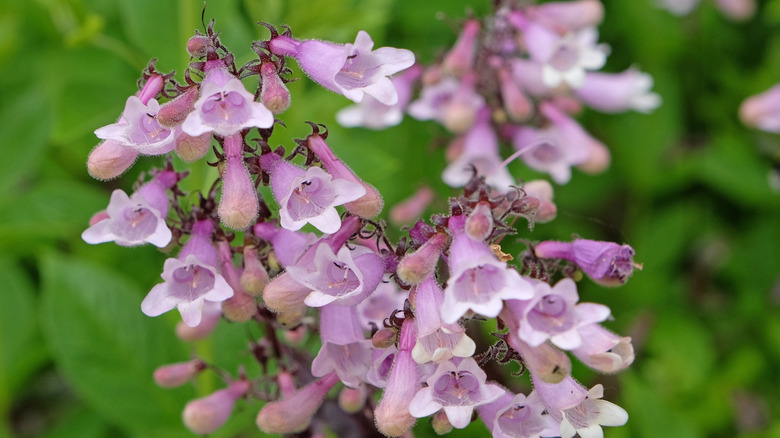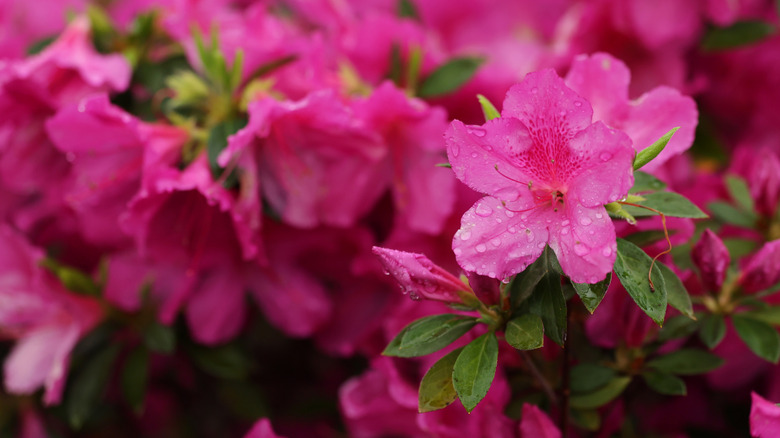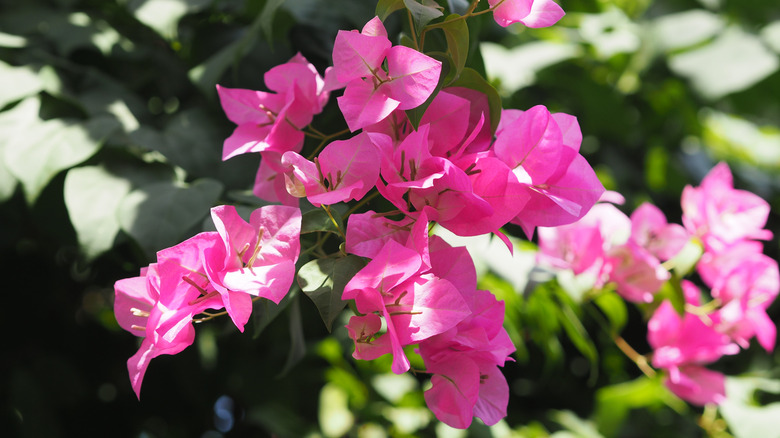9 Trusty Perennials That Bring Color To Your Yard More Than Once A Year
A garden that bursts with color in spring, then stays vibrant through summer and into fall. This dream garden scenario is more achievable than you'd think. You don't have to settle for a quick spring bloom and months of fading greenery. With the right mix of reblooming perennials, your yard can stay lively with pops of color that come back more than once a year. Some perennials bloom on their own more than once, while others respond well to simple care like deadheading or cutting back after the first flush. With a little planning, you can fill your yard with flowers that return throughout the season.
Daylilies, reblooming iris, catmint, perennial geraniums, and penstemon are just a few reliable choices that offer more than one round of color. These plants are also practical. Most are low-maintenance, can handle heat and dry spells, and don't need perfect soil to thrive. That makes them ideal for busy gardeners or anyone working with less-than-ideal conditions. Instead of watching your garden peak early and fade by midsummer, you'll get a steady stream of blooms that keep things looking full, colorful, and alive — all without the need to constantly replant.
Daylilies
Daylilies are a vibrant, low-maintenance choice for perennial borders, especially in USDA Hardiness Zones 3 through 9. Known for their wide range of colors and bloom shapes, these plants can flower more than once a year, particularly reblooming types like 'Going Bananas' and 'Storm Shelter.' You'll find early-season bloomers kicking off in spring, with others peaking in May, and some varieties continuing well into summer. These colorful flowering perennials thrive in full sun, adapt to most soils,and need minimal care once established.
Perennial geraniums
If you're looking for something that doesn't ask for much but gives a lot in return, perennial geraniums (Geranium spp.) are a solid pick. They grow well in sun or part shade and don't mind poor soil or dry spells once they're settled in. In zones 3 through 9, you'll get bursts of color from spring through fall, especially if you deadhead regularly. The flowers come in pinks, purples, blues, and soft whites, and the foliage turns shades of gold or red in fall. Some varieties even throw out a second round of blooms later in the fall.
Catmint
Catmint (Nepeta) is one of those plants you can count on to keep the color coming. It begins flowering in late spring, takes a short break, then bounces back with fresh blooms through summer and into fall, as long as you keep up with deadheading. The soft blue, pink or lavender blooms look great against its silvery, mint-scented leaves. Moreover, it's easy to grow. Catmint does best in full sun but tolerates some shade, and once it's established, it hardly needs any care. It's hardy in zones 3 to 9 and returns every year, looking fuller than the last.
Dianthus
Dianthus brings a lot of charm as a low-growing plant. It stays compact (just about 8 inches tall), but the bright pink flowers really pop against the silvery-blue foliage. The blooms start in late spring and often come back later in the season if you give it a quick trim after the first round. It grows well across most of the U.S., especially in zones 3 through 9. This plant thrives in full sun and well-drained soil, and it doesn't mind heat, drought, or even deer. However, keep in mind that it's toxic to pets and people if ingested.
Endless Summer hydrangeas
Endless Summer hydrangeas live up to their name with blooms that just keep coming. Unlike most hydrangeas, they flower on both old and new wood. So, you'll get that first big flush in late spring, followed by more blooms through summer and even fall. The mophead flowers can be blue, white, or pink, and the glossy green leaves turn a rich burgundy in autumn. Despite their delicate look, these shrubs are tough and cold-hardy, thriving in zones 4 to 9. They're also disease tolerant and easy to grow, making them a standout in almost any yard.
Reblooming irises
Reblooming irises are the overachievers of the flower bed. Just when you think they're done after their big spring show, they surprise you with another round of flowers in late summer or early fall. Eye-catching and very fragrant, these blooming perennials grow best in zones 4 through 9, where they can soak up plenty of sun. Like most irises, reblooming types can attract pests like aphids and iris borers. They're also prone to leaf spot if the air flow is poor, so it helps to give them a little breathing room when planting.
Bearded tongue
Bearded tongue (Penstemon) brings height and color without making a fuss. Its tall, upright stems are topped with tubular flowers in shades of red, orange, pink, or purple that show up in spring. Give it a good trim after that first bloom, and you might get an encore later in the summer. The 'Husker Red' variety adds even more drama with deep maroon foliage and soft pink blooms. This plant loves full sun and needs soil that drains well. It's hardy in zones 3 to 8 and can reach up to five feet tall.
Encore azaleas
Most varieties of azaleas bloom once and call it a season, but not the Encore series. These reblooming shrubs put on their first big show in spring, then come back for a second (and sometimes third) round in summer and fall. Varieties like 'Autumn Belle' and 'Conlic,' have colors ranging from soft pink to bold red. They grow 2 to 5 feet tall and do best in zones 6 to 10. Encore azaleas can handle more sun than most azaleas, but still appreciate a bit of afternoon shade. Just give them well-draining, acidic soil and consistent watering.
Bougainvillea
Bougainvillea adds bold color without needing much in return. The bright bracts, often mistaken for flowers, come in shades of fuchsia, red, orange, yellow, or white and appear several times a year, especially in warm weather. This plant thrives in full sun and actually does better when the soil stays a little on the dry side. It doesn't like cold, though, and needs protection from frost. In zones 9 through 11, it grows as a true perennial and can be trained on fences, trellises, or walls. However, in colder climates, it acts more like an annual.

